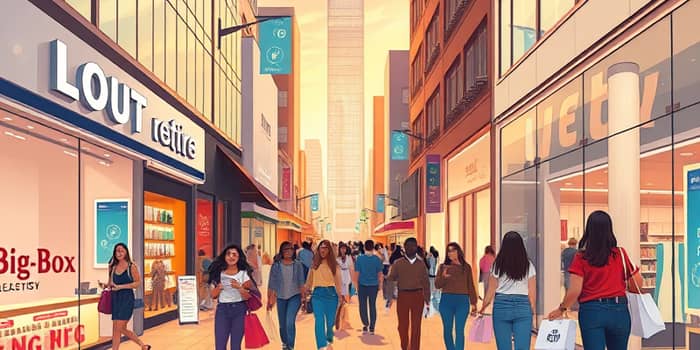
The retail landscape has undergone a seismic shift over the past few years. After the global pandemic disrupted consumer habits, recent data points to a clear trend: renewed foot traffic and optimism are defining the sector’s next chapter. From discount chains to experiential flagship stores, retailers are adapting strategies that blend digital innovation with in-store engagement.
As economic confidence returns and inflation cools, industry leaders anticipate continued growth in 2025. Below, we unpack the drivers behind this resurgence and offer actionable insights for retailers aiming to capitalize on the momentum.
Foot traffic rose by approximately 0.4% in 2024 compared to 2023, signaling a stabilization after pandemic-induced volatility. By year-end, discount and dollar stores led early recovery, while big-box and specialty retailers captured shifting consumer interest in the latter half of the year.
CBRE projects that prime trade areas fully recovered to 2019 levels by Q3 2024 and will surpass those benchmarks in 2025. Key shopping districts, which reached 81% of pre-pandemic traffic by Q4 2023, are now back to thriving hubs of commerce and community.
As shoppers return, preferences are evolving. Beauty and self-care retail chains saw foot traffic grow by just 1.5% in 2024, down from 18% the previous year. Yet holiday-driven spikes remain powerful: Valentine’s Day 2025 generated a 49.6% year-over-year surge in beauty store visits.
Ulta’s Burbank location exemplifies the potential of well-crafted in-store experiences, reporting 55,700 visits in March 2025 alone. Retailers that combine product expertise with events and personalization are winning attention and loyalty.
In today’s market, roughly 70% of retail sales are digitally influenced. While e-commerce remains vital, physical stores regained prominence: in 2022, 78% of sales growth was driven by in-store transactions, up from 46% in 2019.
Closing a store can depress digital sales by 11.5%, illustrating the critical link between online and offline. Leading retailers deploy unified analytics platforms that track browsing, appointments, and purchases, enabling seamless marketing and personalized outreach.
Record-low availability and rising rents in prime locations have pushed retailers to explore alternative districts. Since 2021, rents rose 9% in the Americas and 5.8% globally for top-tier trade areas, prompting brands to cluster in emerging neighborhoods with lower overhead.
Smart site selection—rooted in foot traffic analysis, competitor mapping, and demographic profiling—has become a core competency. Data-driven location choices can reduce risk and maximize visibility, particularly in high-potential secondary corridors.
Exceptional service remains a key differentiator: 75% of shoppers report spending more after positive interactions with store staff. Retailers are redefining stores as venues for experience, education, and community connection.
Advanced location analytics empower retailers to measure catchment areas, traffic drivers, and cannibalization risks. By overlaying transaction data with mobile footfall metrics, brands can pinpoint underserved markets and optimize store layouts for flow and conversion.
Integrating CRM insights with spatial intelligence creates a feedback loop that refines expansion plans, merchandising mixes, and marketing budgets—ensuring every square foot contributes to profitability.
Despite the positive trajectory, retailers face ongoing hurdles: competition for prime real estate, labor shortages, and supply chain uncertainties. Success will hinge on agility, investment in staff development, and partnerships that streamline operations.
City governments are stepping in with commercial corridor revitalization grants and workforce training programs. These initiatives help communities rebuild vibrant shopping districts and prepare talent for evolving retail roles.
As foot traffic returns to—and surpasses—pre-pandemic levels, the retail sector stands at a crossroads. Brands that marry data-driven site selection with immersive in-store experiences and seamless digital channels will capture the lion’s share of consumer attention and spending. The next wave of growth belongs to those bold enough to innovate and reimagine the future of shopping.
References













